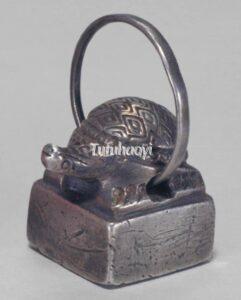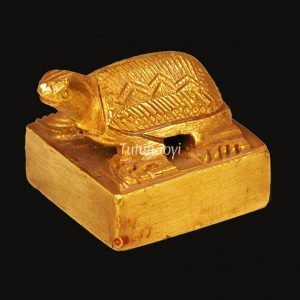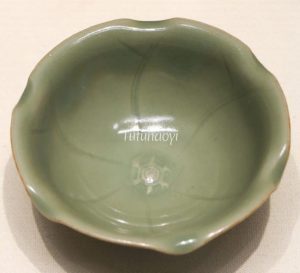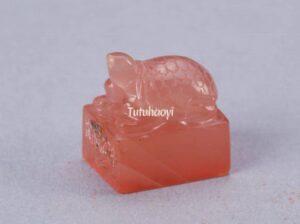Tortoise
龟
© Tutuhaoyi.com owns the copyright of the description content for the images attached. Quoting all or part of the description content on this page is permitted ONLY IF ‘Tutuhaoyi.com’ is clearly acknowledged anywhere your quote is produced unless stated otherwise. (本页描述内容版权归Tutuhaoyi.com所有,转发或引用需注明 “Tutuhaoyi.com”, 侵权必究, 已注开源信息的条目除外。)
The character 龟 gui for ‘tortoise’ is explained in volume 13 of the annotated version of the oldest dictionary in China, Shuowen jiezi 说文解字注 (Explanations of Simple Graphs and Analyses of Composite Graphs). There is a quote from Liu Xiang (刘向, 77 BCE – 6 BCE), the Han-dynasty imperial librarian, in the annotation, which says ‘… Tortoises last long. The tortoise lives for a thousand year and, therefore, can be a medium to communicate with spirits (龟之言久,龟千岁而灵).’ During the early fourth century, the Jin (晋) dynasty scholar Ge Hong (葛洪, 283 – 343) complied The Baopuzi (抱朴子) ‘Book of the Master Who Embraces Simplicity’. In the chapter entitled ‘Rejoinders to Popular Conceptions (对俗)’, he wrote, ‘Once you live, you will die. The tortoise and the crane can live for a long time. We know that they live long and then we can learn from their way of life to realise our own longevity.’ These thoughts laid the foundation for the Chinese to regard the tortoise as a longevity symbol. In the same chapter, Ge Hong also quoted from an earlier book that ‘The one-thousand-year-old tortoise has five colours and … floats on a lotus leaf.’ Therefore, corresponding images were created to enhance their owners’ health and life expectancy. Naturally, the tortoise accompanies immortals and fairies to indicate their everlasting state.
literature research by Dr Yibin Ni
Fig 1: jade carving, Song- Yuan dynasty, courtesy of the National Palace Museum, Taipei
Fig 2: bronze seal, Han dynasty (202 BCE – 220 CE), courtesy of the National Palace Museum, Taipei
Fig 3: silver seal, Eastern Han dynasty (25CE – 220 CE), courtesy of Palace Museum, Beijing
Fig 4: bronze seals gilded with gold, 3rd century, courtesy of the Trustees of the British Museum
Fig 5: ceramic water dropper, Eastern Jin court (317-420), courtesy of Palace Museum, Beijing
Fig 6: gold seal, Eastern Jin court (317-420), courtesy of Nanjing Municipal Museum, China
Fig 7: steatite covered ink palette, Six Dynasties – early Tang (7th century or earlier), courtesy of the Museum of East Asian Art, Bath, UK
Fig 8: tortoise-shaped bottle, Tang Dynasty three-color glazed pottery, Tang dynasty (618-907), courtesy of Da Tang Xi Shi Museum, Xi’an, Shaanxi Province, China, photographed by Weibo ID @hetaodan
Fig 9: bowl with applied decoration, unearthed from the foundation of a pagoda dated 977, courtesy of Dingzhou Municipal Museum, Hebei Province, China
Fig 10: 神龟图, hanging scroll, ink and colour on silk, Zhang Gui (张珪, active in 1156-1161), Jin dynasty, courtesy of Palace Museum, Beijing
Fig 11: lotus-leaf-shaped bowl with carved decoration, Longquan ware, Yuan dynasty (1271-1368), courtesy of Palace Museum, Beijing
Fig 12: round covered box, Cizhou ware, c. 1500-1600, courtesy of the Trustees of the British Museum
Fig 13: agate seal, Yongzheng period (1723-35), Qing dynasty, courtesy of Palace Museum, Beijing












